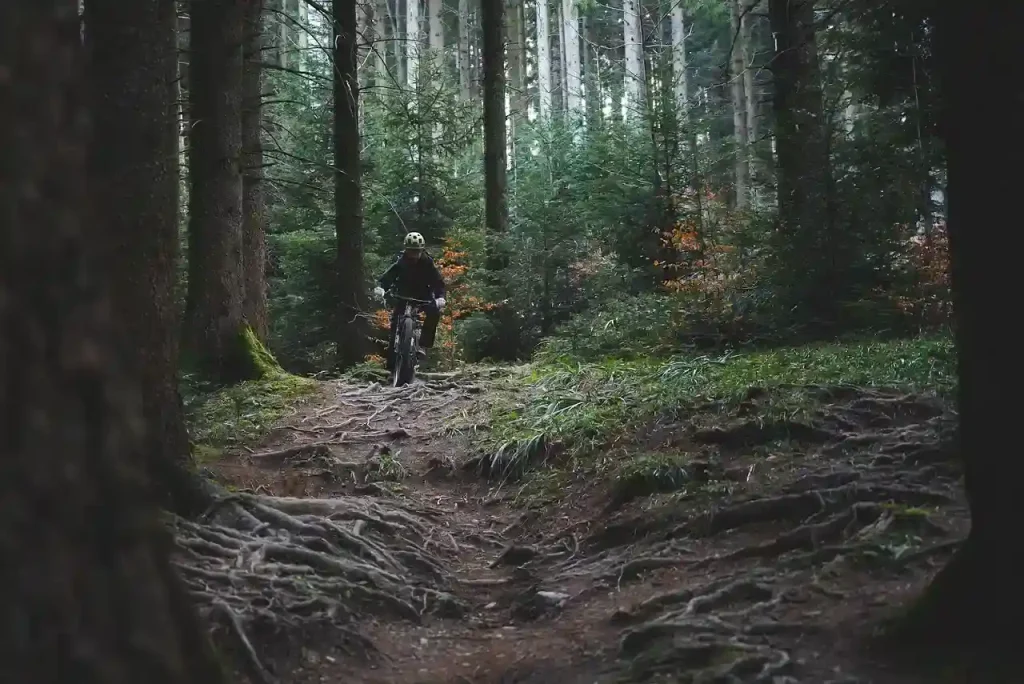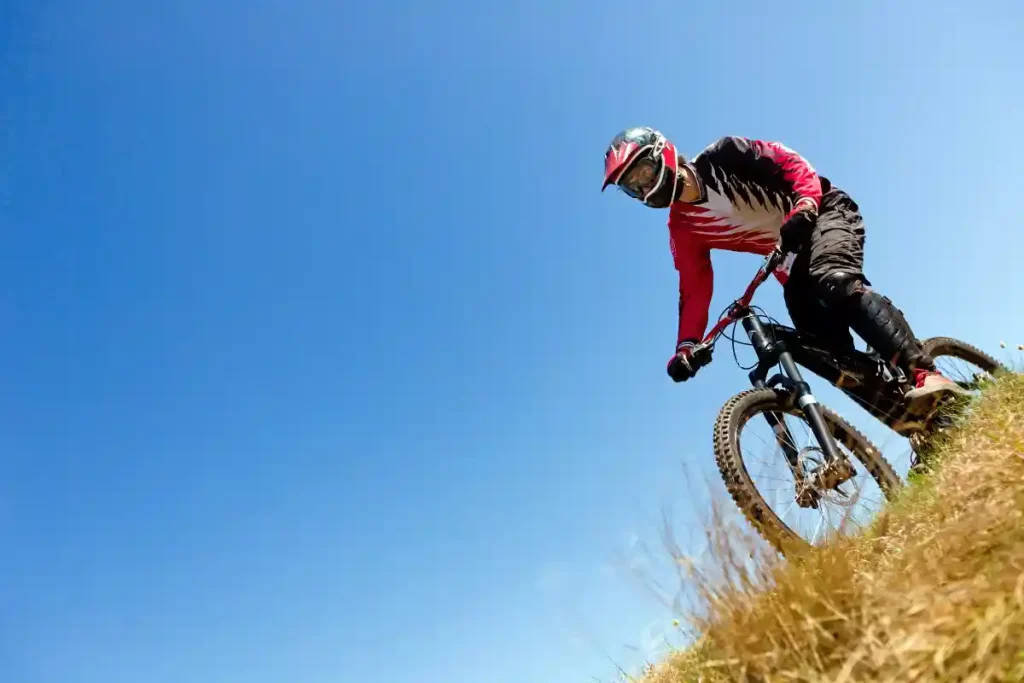Yes, Mountain bikes can initially be hard to ride for beginners due to their specialized design for off-road terrains, demanding handling, and navigating rough trails.
The required balance, adaptability to varied terrains, and physical demands such as uphill climbs and technical descents might pose difficulties. However, with practice, patience, and gradual progression, riders can develop the necessary skills, confidence, and enjoyment in mountain biking.
Access to beginner-friendly trails, proper guidance, and learning basic techniques significantly aid in overcoming these initial hurdles, ultimately turning mountain biking into an exciting and rewarding activity.
Understanding the Basics: Is Riding a Mountain Bike Challenging for Beginners?
Starting mountain biking can feel like stepping into a thrilling yet daunting world. For beginners, the challenges lie not just in mastering the bike but also in acclimatizing to off-road terrains that differ vastly from smooth pavements. The unique design of mountain bikes, tailored for rugged trails, demands adaptability and skill.
To ease into this realm, beginners should focus on fundamental techniques—balancing, maneuvering, and shifting body weight. Starting with easier trails, and gradually progressing to tougher ones, helps build confidence and skills over time. Seeking guidance from experienced riders or joining beginner-friendly group rides can offer invaluable tips and support.
The learning curve may seem steep initially, but persistence pays off. Overcoming these initial hurdles leads to a rewarding experience, opening doors to explore nature’s wonders on a mountain bike.
Read more: Is Mountain Biking Hard?
Demystifying Mountain Bike Terrain: How Does It Affect Ride Difficulty?

Mountain bike terrains vary from rocky paths to muddy trails and steep descents, each posing its challenges. Navigating rocky trails demands precision to avoid obstacles and maintain balance. Steep inclines require both physical endurance and mental focus, emphasizing efficient gear shifting and body positioning.
Forest trails, while visually captivating, present challenges with narrow pathways and natural obstacles. Adapting to these terrains involves quick decision-making and adept bike-handling skills. Understanding these challenges helps riders prepare mentally and physically, enhancing their overall experience.
While terrain diversity adds excitement, it also underscores the importance of adapting techniques to conquer varying landscapes, creating a thrilling yet demanding ride.
Read more: Is Cross Country Mountain Biking Hard?
Unpacking the Mechanics: Why Do Mountain Bikes Feel Harder to Pedal?
The perceived difficulty in pedaling mountain bikes stems from their design specifics. Wider, knobbier tires, designed for better traction on rough terrains, generate more rolling resistance on smoother surfaces. Additionally, the suspension system, while absorbing shocks on trails, can diminish pedaling efficiency on flat roads.
The gearing ratio of mountain bikes prioritizes climbing over speed, contributing to the feeling of difficulty on even surfaces. Understanding these mechanical nuances helps riders appreciate the trade-offs in design. While mountain bikes may seem more strenuous to pedal on smooth paths, their prowess shines on rugged terrains where their design truly excels.
Exploring the Impact of Bike Components on Riding Difficulty

Key bike components significantly affect the overall ride experience. Factors like bike weight, frame, wheels, and suspension influence maneuverability and handling. Heavier bikes may pose challenges, particularly on technical trails and climbs.
The type and quality of suspension—hardtail or full suspension—affect comfort and control, crucial for handling varying terrains. Components such as gearing, brakes, and tire selection also impact bike performance.
Investing in suitable high-quality components tailored to individual riding styles enhances the overall biking experience. Understanding these components’ roles aids in making informed choices that align with specific riding needs.
Adapting to Differences: How Mountain Bikes Compare to Road Bikes in Difficulty
When comparing mountain bikes to road bikes, their distinctions are crucial in understanding the varying levels of difficulty. Mountain bikes, tailored for off-road escapades, boast wider tires, durable frames, and suspension systems, emphasizing stability and control on rough terrains. However, these features can make pedaling less efficient on smoother surfaces due to increased resistance.
On the flip side, road bikes, are optimized for speed on pavements, sport narrower tires, lightweight frames, and minimal or no suspension. They excel in efficient pedaling and speed on even roads but might lack stability and control on uneven terrains.
Understanding these differences enables riders to adapt their techniques between the two bikes, broadening their skills across different biking disciplines.
Tips and Techniques: Making Mountain Biking More Approachable for Novices

For beginners embarking on mountain biking, adopting fundamental techniques is pivotal. Mastering body positioning, brake control, and bike handling lay a solid foundation. Learning to distribute body weight enhances balance and control on challenging trails.
Starting on easier trails, and gradually progressing to tougher ones, builds confidence and competence. Seeking guidance from experienced riders or joining beginner-friendly group rides offers invaluable insights and camaraderie in the learning process.
Regular maintenance of the bike and safety gear ensures a safe and enjoyable riding experience. Embracing a learning mindset and pushing personal limits progressively fosters growth and skill development for beginners.
Safety Concerns: Is Mountain Biking Tougher on the Body Than Other Activities?
Mountain biking’s physical demands stem from its rugged nature. Negotiating uneven terrains demands constant adjustments, engaging core strength, balance, and agility. This full-body engagement leads to increased muscle activation compared to other activities.
However, the impact of bumps and shocks can strain joints and muscles. Employing proper techniques, warm-up exercises, and stretching routines mitigates these risks, improving flexibility and reducing the likelihood of injury.
Despite the physical demands, mountain biking offers diverse health benefits, enhancing cardiovascular fitness, coordination, and mental well-being. Adhering to safety protocols, conditioning the body, and gradually increasing riding intensity ensures a rewarding and safe experience.
Overcoming Challenges: How to Improve Your Riding Skills on a Mountain Bike

Practicing efficient climbing and enhancing riding skills involves refining techniques and embracing challenges. Focusing on specific areas such as cornering, climbing, and descending elevates overall proficiency. Mastering tight corners and switchbacks bolsters confidence in navigating technical trail sections.
Practicing efficient climbing, including gear selection and body posture, conquering steep inclines. Learning downhill techniques, like weight distribution and brake control, ensures controlled descents.
Consistent practice on diverse terrains exposes riders to varied challenges, honing adaptability and skills. Seeking feedback from seasoned riders or participating in skills clinics accelerates learning and provides valuable guidance.
Adopting a growth-oriented mindset and persistently refining skills contribute to a fulfilling and enjoyable riding experience on mountain bikes.
Time and Persistence: Understanding the Learning Curve for Mountain Biking
Getting proficient in mountain biking involves acknowledging the learning curve. Initially, it can feel challenging as beginners grasp essential skills like balance, handling, and trail reading.
Dedication and practice are key; progress doesn’t happen overnight. Starting on easier trails and gradually advancing to more technical routes is a strategic approach. Over time, persistence pays off, boosting confidence and skill.
It’s essential to celebrate small victories, see improvements as part of the journey, and stay patient. The learning curve in mountain biking is an adventure in itself, offering rewards for each milestone achieved.
Maximizing Enjoyment: Ways to Make Mountain Biking Easier and More Fun
To heighten the enjoyment of mountain biking, paying attention to gear and bike setup is crucial. Having a bike suited to your style and maintaining it well ensures smoother rides.
Exploring various trails diversifies experiences, making rides more exhilarating. Engaging with fellow riders through groups or clubs fosters learning and camaraderie.
Setting achievable goals, tracking progress, and maintaining a positive mindset add enthusiasm. Embracing challenges, celebrating successes, and cherishing the experiences amplify the thrill, making mountain biking immensely enjoyable.
The Psychological Aspect: Confidence Building in Mountain Bike Riding

Confidence is a cornerstone of mountain biking. Building it involves mastering skills progressively and pushing personal limits. Starting with manageable challenges and gradually tackling tougher ones nurtures confidence. Visualization techniques, positive self-talk, and learning from errors boost self-assurance.
Seeking advice from seasoned riders and acknowledging progress reinforce confidence. Small victories along the journey contribute to a positive self-image, enabling riders to take on more significant challenges with conviction.
Confidence is a continuous journey interlinked with skill development, enriching the entire riding experience.
Examining the Impact of Bike Setup on Riding Difficulty
Bike setup significantly influences the riding experience. Factors like frame size, suspension, tires, and saddle position directly affect comfort and control. Optimizing suspension settings to match terrains minimizes impacts, enhancing performance.
Properly inflated tires with suitable treads improve traction and maneuverability. Comfortable saddle adjustments reduce discomfort, enabling longer rides.
Customizing the bike setup to individual preferences and riding styles significantly enhances the overall riding experience. It makes navigating different terrains easier, elevating the enjoyment and ease of mountain biking for riders.
Expert Insights: Addressing Common Misconceptions about Riding Difficulty
Several misconceptions cloud the perception of mountain biking’s difficulty. It’s often seen as a pursuit solely for daredevils or elite athletes, but this isn’t accurate. Mountain biking caters to diverse skill levels and interests, offering trails suitable for beginners to experts.
Additionally, the misconception of its high-risk nature prevails, yet with proper precautions like wearing helmets, employing fundamental techniques, and starting on beginner-friendly trails, risks are significantly mitigated.
Another myth involves the perceived need for expensive gear, but entry-level bikes suffice for beginners to get started.
Understanding and dispelling these misconceptions is crucial. Mountain biking is accessible and adaptable, providing an enjoyable experience for riders of varying skill levels and preferences.
Balancing the Adventure: Assessing the Risks and Rewards of Mountain Biking
Mountain biking embodies a mix of risks and rewards. Risks encompass potential injuries due to falls or accidents, but these can be minimized by practicing safety measures and continuously improving riding skills. Conversely, the rewards are abundant.
Beyond physical fitness, mountain biking offers mental rejuvenation, connecting riders with nature’s beauty. It builds confidence, resilience, and a sense of achievement, fostering personal growth.
Balancing these aspects involves acknowledging risks while embracing the immense rewards.
Managing risks through preparedness and safety measures ensures a fulfilling and enjoyable mountain biking experience, offering both excitement and personal growth opportunities.
Yes, mountain biking is generally considered to be more physically demanding and technically challenging compared to road biking. This is due to the varied and often rugged terrain on mountain trails.
Is it harder to ride a mountain bike on the road?
Yes, riding a mountain bike on roads can be more challenging. Mountain bikes are designed for off-road terrains and may feel less efficient and heavier on smooth surfaces.
Is mountain biking hard to learn?
Initially, mountain biking can be challenging for beginners. Mastering balance, navigating uneven surfaces, and using proper techniques require practice and patience. With consistent effort, it becomes more manageable.
Are mountain bikes hard to ride for beginners?
Mountain bikes can be challenging for beginners due to their sturdier build and the diverse terrains they’re designed for. Starting on easier trails and gradually progressing helps ease the learning curve.
Can road biking skills be applied to mountain biking?
While basic skills like pedaling and balance carry over, specific techniques for handling rough terrains in mountain biking make it a distinct discipline. Road biking skills may not directly translate.
Is mountain biking hard for beginners?
Mountain biking can pose challenges for beginners due to the rugged terrain and technical skills required. However, with patience, practice, and the right guidance, beginners can gradually build their skills and confidence, making mountain biking an enjoyable and rewarding activity.

